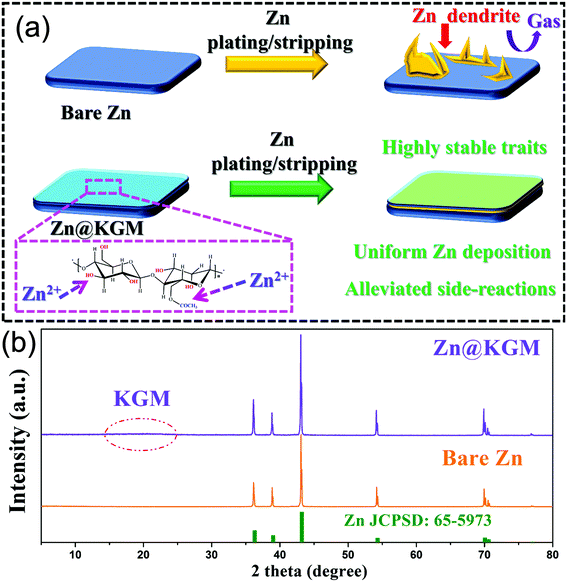 Open Access Article
Open Access ArticleCreative Commons Attribution 3.0 Unported Licence
Correction: Highly stable zinc metal anode enabled by oxygen functional groups for advanced Zn-ion supercapacitors
Kangyu
Zou
a,
Peng
Cai
a,
Xinglan
Deng
a,
Baowei
Wang
a,
Cheng
Liu
a,
Zheng
Luo
a,
Xiaoming
Lou
b,
Hongshuai
Hou
a,
Guoqiang
Zou
*a and
Xiaobo
Ji
ac
aCollege of Chemistry and Chemical Engineering, Central South University, Changsha, 410083, China. E-mail: gq-zou@csu.edu.cn
bSchool of Materials and Chemistry Engineering, Hunan Institute of Technology, 18 Henghua Rd, Hengyang, China
cSchool of Metallurgy and Chemical Engineering, Jiangxi University of Science and Technology, 86 Hongqi Road, Ganzhou 341000, China
First published on 1st March 2021
Abstract
Correction for ‘Highly stable zinc metal anode enabled by oxygen functional groups for advanced Zn-ion supercapacitors’ by Kangyu Zou et al., Chem. Commun., 2021, 57, 528–531, DOI: 10.1039/D0CC07526D.
The authors regret that the incorrect structure of konjac glucomannan (KGM) was used for Fig. 1, Fig. S12 and the Graphical Abstract in the original article. The redundant oxygen atom at the end of the repeating unit in the bracket has been deleted and the position of the hydroxyl group in the glucose unit has been corrected to equatorial. Thus, the updated versions of Fig. 1 and Fig. S12 are displayed here, and the online Graphical Abstract has been updated with the corrected version. These errors do not affect any of the reported experimental results and discussions in the paper. The overall conclusions for the paper remain valid.
Fig. 1 (a) Schematic illustrations of the Zn stripping/plating processes of bare Zn and Zn@KGM anodes. (b) The XRD patterns of bare Zn and Zn@KGM anodes.
Fig. S12 Possible mechanism for stabilized Zn anode triggered by oxygen rich functional groups.
The Royal Society of Chemistry apologises for these errors and any consequent inconvenience to authors and readers.
| This journal is © The Royal Society of Chemistry 2021 |


